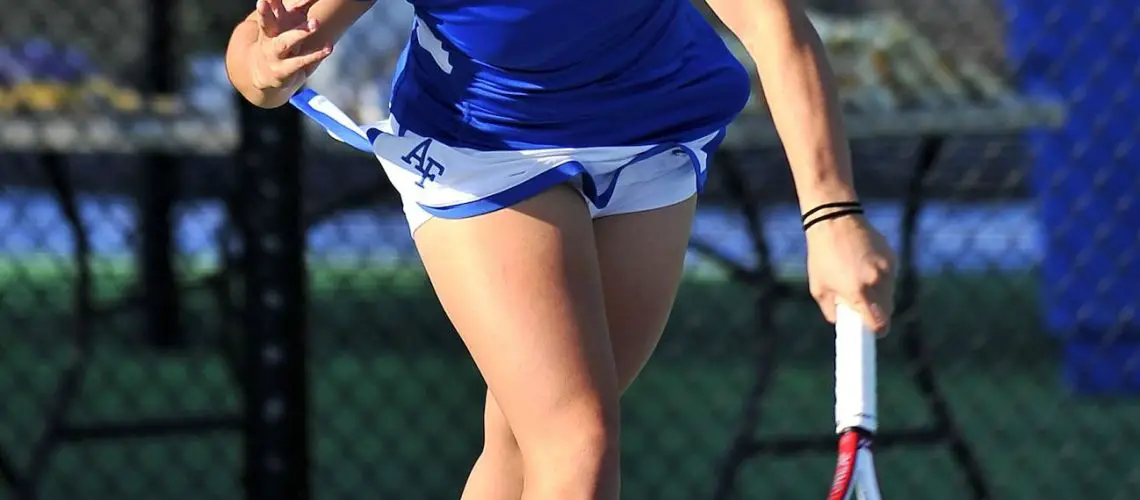We may earn money or products from the companies mentioned in this post.
Brief History of Tennis Rackets

When we delve into the history of tennis rackets, we find ourselves transported to a time when wooden rackets ruled the courts These early iterations were crafted from materials such as ash, beech, and maple, offering players a solid yet heavy tool for their game
However, as time progressed and technology advanced, so too did the composition of tennis rackets The evolution of materials and design brought forth a new era in racket construction
The Early Wooden Rackets
In the early days of tennis, wooden rackets were the norm Players relied on their strength and skill to wield these hefty pieces of equipment The wooden frame provided stability but lacked the power and maneuverability that modern players have come to expect
Evolution of Materials and Design
The breakthrough moment came with the introduction of metal frames in the 1960s Aluminum alloys offered increased durability without sacrificing too much weight This innovation allowed for greater control and improved performance on the court
Further advancements in racket technology led to the incorporation of graphite composites in the 1970s These lightweight materials revolutionized racket design, providing players with enhanced power and maneuverability
In recent years, manufacturers have continued to experiment with various materials like carbon fiber and Kevlar to optimize performance even further Today’s tennis rackets are a testament to how far we’ve come in terms of technological advancements
Importance of Understanding Racket Composition

Influence on Performance
Understanding racket composition is vital for any serious tennis player looking to maximize their performance on the court The choice of material can significantly impact factors such as power, control, spin generation, and overall feel during gameplay
For instance, a racket with a stiffer frame made from graphite composite can provide more power and control, making it suitable for aggressive players who rely on their strength On the other hand, a more flexible frame can offer better shock absorption and maneuverability, catering to players who prioritize touch and finesse
Customization for Individual Needs
Every player has unique requirements when it comes to their tennis racket Understanding the composition of rackets allows players to customize their equipment based on their playing style, physical attributes, and personal preferences
By exploring different compositions, players can fine-tune aspects such as weight distribution, string tension, grip size, and balance point These adjustments can make a world of difference in how comfortable and effective a racket feels in the hands of an individual player
Ultimately, understanding racket composition empowers players to select the perfect tool that complements their skills and enhances their performance on the court
Tennis Racket Frame Materials
Wood
Wood was the traditional choice for tennis racket frames in the early years of the sport It offered a unique feel and responsiveness that players appreciated However, wood rackets had their advantages and disadvantages On one hand, they provided excellent control and touch, allowing players to finesse their shots with precision On the other hand, wood rackets were heavier and less durable compared to modern materials
The historic role of wood in racket development cannot be overlooked It laid the foundation for future innovations and set the benchmark for performance standards
Aluminum
In the late 20th century, aluminum emerged as a popular material choice for tennis racket frames Its lightweight nature made it appealing to players seeking maneuverability on the court Additionally, aluminum rackets were more affordable than their wooden counterparts, making them accessible to a wider range of players
Aluminum rackets were particularly suitable for beginners who were just starting to develop their skills The lighter weight allowed novice players to swing with ease and generate power without sacrificing control
Graphite
Graphite is now the most common material used in modern tennis racket construction Its strength-to-weight ratio benefits make it highly desirable among professional and recreational players alike
One of graphite’s key advantages is its ability to allow customization of stiffness and flexibility in racket frames This enables players to fine-tune their equipment based on personal preferences and playing styles, optimizing performance on the court
Other Materials
Beyond wood, aluminum, and graphite, there are various other materials used in tennis racket construction such as carbon fiber, boron, kevlar, titanium, basalt fibers, etc
Each of these materials possesses unique characteristics and advantages Carbon fiber, for example, offers excellent strength and stiffness Kevlar provides exceptional impact resistance Titanium is known for its lightweight properties
Manufacturers often experiment with combinations and hybrids of these materials to create rackets that offer the best combination of performance attributes such as power, control, and stability
Tennis Racket Strings

When it comes to tennis racket strings, there are various types to choose from Each type has its own unique characteristics and advantages Let’s dive into the different types of strings and what sets them apart
Natural Gut
One of the most premium options available is natural gut strings These strings are made from cow or sheep intestines, providing a truly luxurious feel on the court The advantages of natural gut strings are twofold – they offer superior feel and provide a high level of power to your shots When you hit the ball with these strings, you’ll experience an unmatched level of control and responsiveness
However, natural gut strings do come with some disadvantages Firstly, they tend to be quite expensive compared to other string materials Additionally, they are not as durable as synthetic alternatives, meaning they may need more frequent restringing
Synthetic Gut
If you’re looking for an affordable option that still offers decent performance, synthetic gut strings might be the way to go These strings are typically made from nylon or other synthetic materials designed to mimic the feel and playability of natural gut
Polyester
Polyester strings have gained popularity among players who prefer a firmer response from their racket These stiffer strings provide excellent control and durability, making them suitable for aggressive players who generate a lot of power in their shots
Multifilament
Multifilament strings blend together multiple fibers to create a softer and more responsive string bed This type of string offers enhanced comfort and shock absorption while maintaining good power and control on your shots
Hybrid String Setups
For players who want to combine the benefits of different string types, hybrid setups are a popular choice This involves using one type of string for the mains (the vertical strings) and another type for the crosses (the horizontal strings). By mixing and matching, players can customize their racket to suit their specific playing style and preferences
String Characteristics

Aside from the different types of strings available, it’s important to consider other characteristics such as gauge and tension The gauge refers to the thickness of the string, with thinner gauges providing more power and spin potential but sacrificing durability Tension, on the other hand, affects how tightly the strings are strung Higher tension offers more control but reduces power, while lower tension increases power but decreases control
Conclusion
In conclusion,
Customizing Your Tennis Racket

When it comes to tennis, having the right equipment can make all the difference in your performance on the court One key aspect of customizing your tennis racket is considering its various components and how they can be adjusted to suit your playing style Let’s explore some of these customization options:
Head Size
The head size of a tennis racket refers to the size of the racket face where you make contact with the ball It is typically measured in square inches A larger head size offers a greater sweet spot, providing more forgiveness for off-center hits On the other hand, a smaller head size offers more precision and control Consider your skill level and playing style when choosing a head size
Weight Distribution
The weight distribution of a tennis racket determines how the weight is distributed throughout the frame This affects how easily you can maneuver the racket during swings Rackets with a more evenly distributed weight offer better balance and stability, while rackets with weight concentrated towards the handle provide more power and maneuverability
Balance Point
The balance point refers to where the center of gravity lies in relation to the overall length of the racket A balance point closer to the handle (head-light) provides better maneuverability, allowing for quicker swings and easier control Conversely, a balance point closer to the head (head-heavy) offers more power but may feel slightly slower
Swing Weight
The swing weight represents how heavy or light a racket feels when swung through an arc It combines factors such as weight, balance point, and weight distribution into one measurement that indicates how much effort is required to swing it effectively A higher swing weight provides more power but requires additional strength and technique
Grip Size
The grip size of a tennis racket refers to the circumference of the handle Having the correct grip size is crucial for comfort and control A grip that is too small can lead to a lack of stability, while a grip that is too large can hinder your ability to generate power and maneuver the racket effectively Finding the right grip size will enhance your overall playing experience
Frame Stiffness
The frame stiffness of a tennis racket determines its flexibility or rigidity when making contact with the ball Rackets with higher stiffness offer more power but may transmit more vibrations to your arm On the other hand, rackets with lower stiffness provide better control and feel but may sacrifice some power
Vibration Dampeners
Vibration dampeners are small accessories that can be added to the strings of your tennis racket to reduce vibrations upon impact with the ball They help minimize discomfort and potential arm injuries caused by excessive vibrations Experimenting with different types of dampeners can enhance your playing comfort
Personal Preferences
Lastly, don’t forget about your personal preferences when customizing your tennis racket Take into account factors such as color, brand, and overall aesthetics that make you feel confident and motivated on court
Useful Links

What Are Tennis Racquets Made of?
What Are Tennis Racquets Made Of?
A smashing history of how tennis rackets evolved from …
Tennis Rackets: Where Are They Made and Why?
How Are Tennis Racquets Made?
What Are Tennis Rackets Made Of? (Full Explanation)
The Evolution Of The Tennis Racket: From Wood To High …
HISTORY OF RACKETS AND STRINGS
The Tennis Racket: A Brief History
How Tennis Rackets Are Manufactured
String theory: the evolution of the tennis racket
Evolution of the Tennis Racket
What Are Tennis Strings Made Of?
The difference between a cheap and an expensive tennis …
The History of Tennis Racquets
The Evolution of the Tennis Racquet – by Ronen Ainbinder
The Key to Choosing the Best Tennis Racket
Evolution of Tennis Rackets






